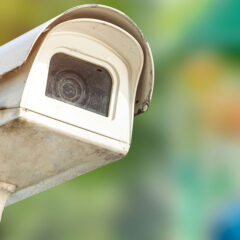Smart Sensors an Intelligent Solution to Physical Security Threats

It’s no secret that cybercrime has increased dramatically in recent years. At the same time, however, businesses everywhere are also experiencing elevated levels of physical security threats such as break-ins, vandalism and internal theft. Nearly nine in 10 businesses report an increase in physical threats to their organizations since 2021, according to a new study.
Decades-old physical security measures are a contributing factor. Many organizations remain heavily reliant on “pin and tumbler” locks with metal keys or plastic key cards to control office access, but they are increasingly unreliable. Mechanical locks can be easily opened with lock picks or special “bump” keys, and key cards are easily cloned.
Smart sensing technologies can dramatically improve physical security by bringing it into the digital age. Smart sensors featuring low-power mobile microprocessors can dramatically improve access controls by incorporating artificial intelligence, biometric readers, threat detection software, motion sensors and other digital security measures.
Access controls and physical security have become even more important for organizations supporting remote and hybrid workforces. Employees with flexible work schedules often need to go in and out of the office at irregular hours. Smart security measures help ensure they can enter and exit as needed without creating security gaps. Here are just a few of the ways smart sensors enhance security measures:
- Smart door locks. Embedded sensors with IP connectivity allow users to unlock doors through a smartphone or other Internet-connected device. They can also be integrated with other Internet of Things (IoT) devices and smart assistants that allow you to remotely check the status of a door and receive notifications whenever a door is opened. Smart locks can also provide an audit trail telling you who entered the building and when they entered.
- Facial-recognition locks. Camera-equipped locking systems with embedded sensors connect to cloud-based 3-D imaging and artificial intelligence applications to accurately recognize faces in less than a second. 3-D “depth check” technology prevents someone from using a photo to gain access.
- Smart surveillance. Commercial and industrial surveillance systems with solid-state image sensors produce high-resolution 4K video footage that can be remotely monitored and managed. Cameras can record continuously or automatically begin recording and storing data when an alarm goes off or motion is detected.
- Video analytics. When connected with cloud-based analytics engines, smart surveillance systems can enhance security with facial recognition, motion detection, license plate recognition, object detection and tracking. These systems can generate alerts when suspicious people, vehicles, objects or activities are spotted.
- Smart lighting. Inadequate lighting makes life easier for criminals and more difficult for security personnel and law enforcement. Smart lighting systems use sensors to automatically turn on lights when someone enters a room. They can also turn lights on and off at intervals to simulate occupancy during off hours. In addition, smart lights can flash repeatedly if an alarm is triggered, alerting authorities of unusual activity or unauthorized access.
The demand for such solutions is increasing. In one recent study, more than half said their company’s access control system should be improved or modernized and more than a third said they believe smart technology needs to be integrated into their office security protocols. Such demand is expected to drive steady growth of the smart security market through the end of the decade when it will reach a market value of more than $11 billion, according to Data Bridge Market Research.
SageNet has the technical skills and the industry connections to help organizations address increasing physical security threats. Contact us to learn more about using smart sensing technology to harden your organization’s physical security.

Craig Talbot
SVP, Enterprise SalesThe Managed Network Services industry has definitely become more competitive. As much as broadband is now a commodity, we try to help the customer by making sure they get the best possible speed at the best price – and then help them manage the firewall and beyond. Regardless of who a customer chooses for large-scale broadband network, there will be challenges at some point in the relationship. It’s how SageNet responds that sets us apart.
Get to know CraigMore Insights
-
Cybersecurity
Making the Grade on K-12 Cybersecurity
-
Connectivity, Cybersecurity
Legacy Firewalls Vulnerable to Encrypted Threats
-
Connectivity, Cybersecurity
Enhancing School Safety with Integrated Security Technologies




